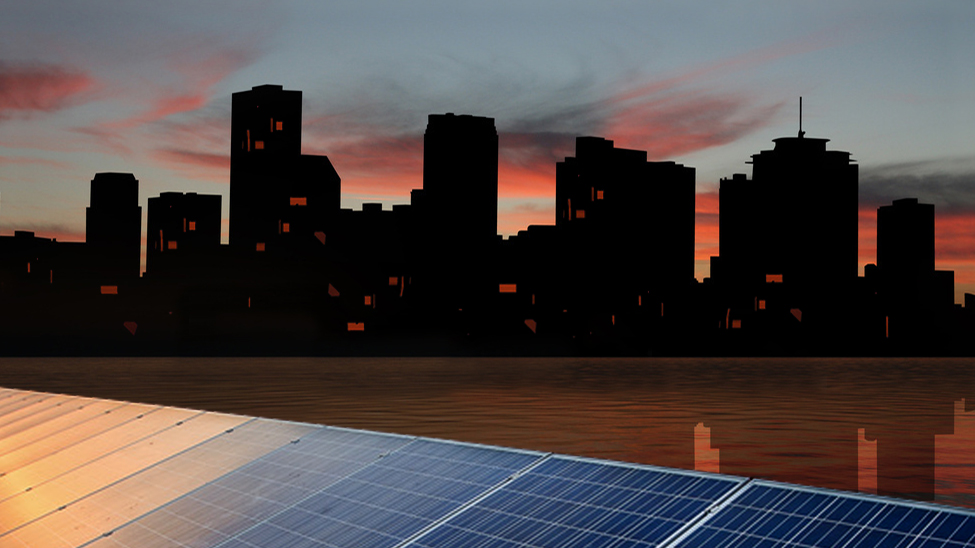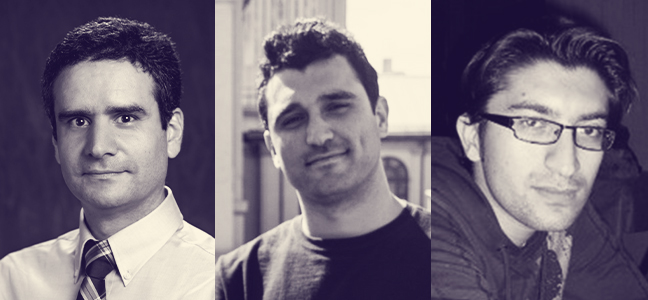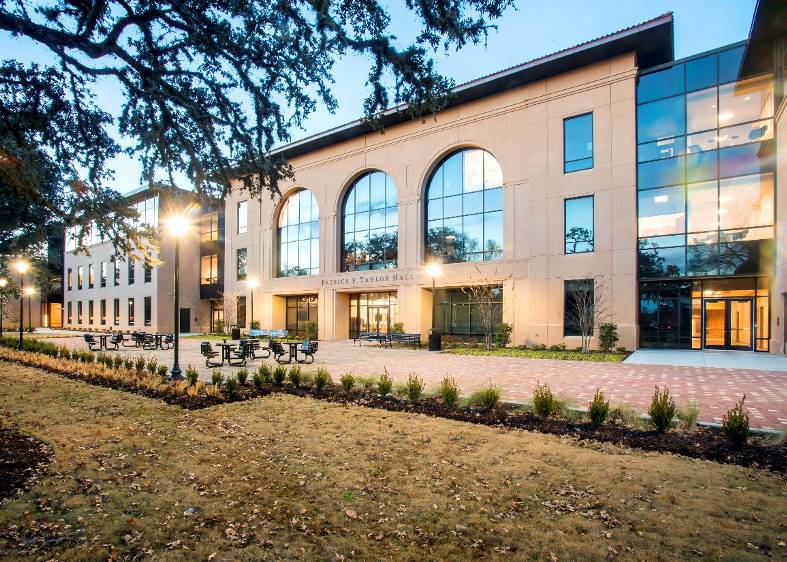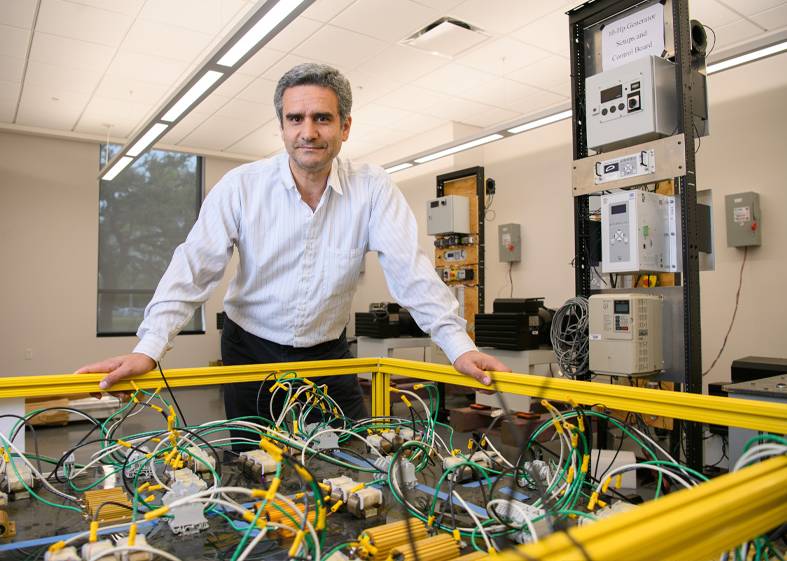Never in the Dark—Entergy Has Invested >$1 Million in LSU as University Power Engineers Provide New Solutions for Industry
January 20, 2021
LSU and Entergy have developed a sustained research relationship over the past decade as the electric utility giant continues to tackle new challenges related to renewable energy integration.

LSU power engineers have collaborated with Entergy on several projects related to renewable energy integration—especially solar. Two of them involved how to protect downtown networks, such as in New Orleans (above), from accidental and potentially dangerous blackouts due to new and unexpected patterns in power transmission and distribution as a system that was built to serve energy to customers would switch to sourcing energy from them instead, potentially triggering sensitive protection mechanisms.
In recent years, LSU has served as a major research collaborator for Entergy on a multitude of projects to help integrate renewable energy into the existing power grid. University power engineers are helping to provide practical solutions, and in return, Entergy has funded the researchers’ work with over $1 million in cash as well as several in-kind donations and grant writing support to funnel more federal research dollars and cutting-edge expertise to Louisiana and Entergy’s larger service territory in the Deep South.
“We turned to LSU because we wanted to get ahead of any potential problems that might appear on our system with the increase of renewable energy,” said Thomas Field, senior staff engineer at Entergy. “The technology is moving forward, and LSU faculty have been helping us identify issues and develop solutions for those issues.”
Entergy is one of only four companies in the electric utility sector listed on the Dow Jones Sustainability Index and the only company to be included for 19 consecutive years.
“Entergy has positioned itself as a leader in the U.S. on low CO2 emissions, and staying on the frontier of research by partnering with LSU and other universities in our service territory has definitely been part of that,” added Entergy’s Katherine Balbero.
With the arrival and more widespread use of solar as a source of electrical energy, Entergy faced and continues to face a number of challenges.
With the arrival and more widespread use of solar as a source of electrical energy, Entergy faced and continues to face a number of challenges. One of the first projects LSU associate professor and electrical engineer Shahab Mehraeen got involved in was to prevent accidental blackouts in downtown networks, including the New Orleans French Quarter where the network is underground and more and more residents expressed interest in putting solar panels on rooftops. Mehraeen did a study of the power distribution network, which originally was built to serve energy to customers—not source it from them. Sensitive protection mechanisms that were put into place to guard against threatening abnormalities or system faults could accidentally be tripped as large amounts of energy suddenly would be flowing in perhaps unexpected directions. If triggered, a large part of the downtown area could suffer a potentially dangerous blackout. By working together, LSU and Entergy identified the potential negative impacts and what was needed to prevent them.
“We showed Entergy which adjustments had to be made by, for example, putting fiberoptics underground and using smart protection systems,” said Mehraeen. “We also, more recently, helped them figure out how to get rid of flicker caused by sudden drops in voltage—another challenge brought by the integration of renewable energy—by adding a distributed system of batteries. Basically, when running on solar power, you don’t want damage to your TV, appliances, and devices when clouds go by. That’s a big problem.”

LSU power engineers Shahab Mehraeen, Amin Kargarian, and Mehdi Farasat.
Mehraeen has also worked on renewable energy projects with Entergy related to overhead powerlines and the reliability and security of the transmission and distribution grids. Other recent research projects have involved how to establish microgrids at complex and critical facilities, such as hospitals, and ensuring continuous power service for neighborhoods where electric vehicle chargers might challenge the system at peak-demand time as people return home from work—the latter project was started by Alfredo Lopez Distinguished Professor Leszek Czarnecki in the LSU Division of Electrical & Computer Engineering, and Entergy invited CLECO, a regional utility company based in Pineville, Louisiana, to be part of the effort. As part of the ongoing collaboration, they installed electric car chargers on the LSU main campus in Baton Rouge, and Entergy also donated an IEEE 14-bus physical system for research and testing.
“I think this is more or less unique among institutions of higher learning in the U.S.—to have this kind of physical model,” said LSU Assistant Professor Amin Kargarian. “I haven’t seen it elsewhere. My colleagues at other universities have to run computer models to study different power scenarios, including renewable energy connections, generators, voltage issues, and loads. Having a real physical system for testing and validation tells us a lot more than what you get from a computer model. It was very generous of Entergy to give us this.”
Field is quick to point out that Entergy benefits, too.
“In a recent study on the effects of community solar on the transmission system, as different technologies are merging, LSU identified a potential problem with the interaction of load tap changers and smart converters, and was able to find a solution,” he said. “LSU’s solution involved different settings on the converters without changing the connectivity of the distribution system, which was the route other universities were taking.”
A recent project Kargarian and his LSU colleague Mehdi Farasat have been working with Entergy on is how to predict the fluctuations and variability inherent in not just solar power, but wind power as well. Entergy serves customers in Arkansas and their grid is connected to a neighboring grid in Oklahoma, which serves a good amount of wind power. It can be difficult to predict how much power will be exchanged between the systems, and this can be critical for system security analysis, among other things. The LSU researchers developed an algorithm to help predict the tie line flow.


“This was very important for us because day-ahead prediction of powerline flow affects how much generation we have to bring online or contract for the next day,” Field said. “There’s a cost value associated with being able to prepare for a certain amount of load as far as our generation is concerned. Before LSU developed this algorithm, we didn’t have a way other than to use the value from the day before, which can lead to a significant amount of error.”
Entergy’s support of LSU research extends as far as writing grant proposals together.
“As Louisiana Board of Regents and federal research grants have become more competitive, we’ve worked with LSU on several proposals, and we try to find alignment on projects that are beneficial to us in some way,” Field said.
“We work with several universities, but one thing that always comes up is how LSU teaches a wider variety of courses. That’s where LSU is a leader.”
—Thomas Field, senior staff engineer, Entergy
Sometimes the benefit to Entergy is less obvious. Last year, Kargarian received a Faculty Early Career grant from the National Science Foundation—one of the most prestigious awards for young faculty and often a precursor to university tenure. Roughly 90 minutes before his application was due, Kargarian happened to be talking with Entergy about a joint curriculum development project and mentioned, in passing, what he was just about to submit.
“I think five minutes later I had a letter of support from Entergy,” Kargarian recalled. “It was incredible, and I’m honestly not sure I would have received the award without their support. LSU’s collaborations with Entergy have probably saved a lot of assistant professors’ careers.”
“Helping the young faculty at LSU makes sense to us because we want a steady set of power faculty in our service territory that can mature and become good, seasoned professors,” Field responded. “If they keep turning over because they can’t get tenure, we don’t have experienced professors to help train and develop future power engineers. And we want to support this in the areas we serve because our employees that come from these communities are more likely to stay with Entergy until they retire, giving us a more stable workforce.”
Field positions LSU as a leader in power and energy engineering education because of the large variety of courses offered at the university.
“We work with several universities, but one thing that always comes up is how LSU teaches a wider variety of courses. That’s where LSU is a leader,” Field said.